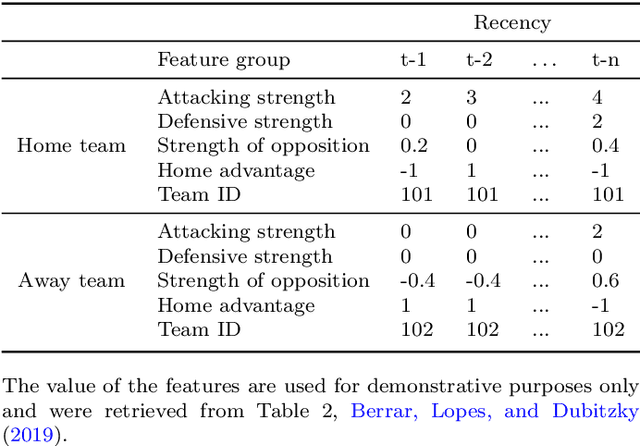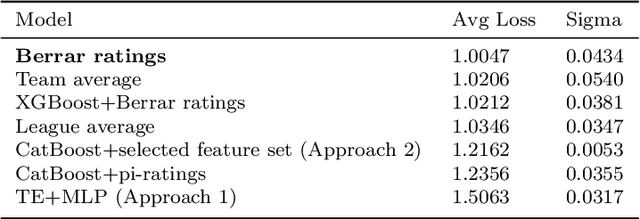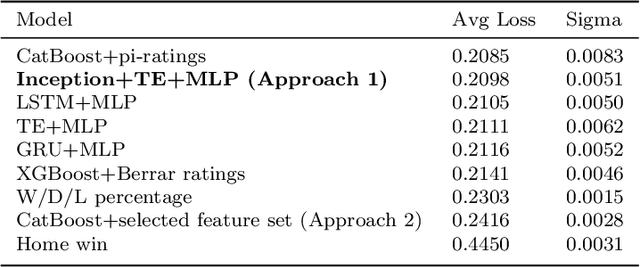Rikuhei Umemoto
Velocity Completion Task and Method for Event-based Player Positional Data in Soccer
May 22, 2025Abstract:In many real-world complex systems, the behavior can be observed as a collection of discrete events generated by multiple interacting agents. Analyzing the dynamics of these multi-agent systems, especially team sports, often relies on understanding the movement and interactions of individual agents. However, while providing valuable snapshots, event-based positional data typically lacks the continuous temporal information needed to directly calculate crucial properties such as velocity. This absence severely limits the depth of dynamic analysis, preventing a comprehensive understanding of individual agent behaviors and emergent team strategies. To address this challenge, we propose a new method to simultaneously complete the velocity of all agents using only the event-based positional data from team sports. Based on this completed velocity information, we investigate the applicability of existing team sports analysis and evaluation methods. Experiments using soccer event data demonstrate that neural network-based approaches outperformed rule-based methods regarding velocity completion error, considering the underlying temporal dependencies and graph structure of player-to-player or player-to-ball interaction. Moreover, the space evaluation results obtained using the completed velocity are closer to those derived from complete tracking data, highlighting our method's potential for enhanced team sports system analysis.
SoccerSynth-Detection: A Synthetic Dataset for Soccer Player Detection
Jan 16, 2025



Abstract:In soccer video analysis, player detection is essential for identifying key events and reconstructing tactical positions. The presence of numerous players and frequent occlusions, combined with copyright restrictions, severely restricts the availability of datasets, leaving limited options such as SoccerNet-Tracking and SportsMOT. These datasets suffer from a lack of diversity, which hinders algorithms from adapting effectively to varied soccer video contexts. To address these challenges, we developed SoccerSynth-Detection, the first synthetic dataset designed for the detection of synthetic soccer players. It includes a broad range of random lighting and textures, as well as simulated camera motion blur. We validated its efficacy using the object detection model (Yolov8n) against real-world datasets (SoccerNet-Tracking and SportsMoT). In transfer tests, it matched the performance of real datasets and significantly outperformed them in images with motion blur; in pre-training tests, it demonstrated its efficacy as a pre-training dataset, significantly enhancing the algorithm's overall performance. Our work demonstrates the potential of synthetic datasets to replace real datasets for algorithm training in the field of soccer video analysis.
TeamTrack: A Dataset for Multi-Sport Multi-Object Tracking in Full-pitch Videos
Apr 22, 2024Abstract:Multi-object tracking (MOT) is a critical and challenging task in computer vision, particularly in situations involving objects with similar appearances but diverse movements, as seen in team sports. Current methods, largely reliant on object detection and appearance, often fail to track targets in such complex scenarios accurately. This limitation is further exacerbated by the lack of comprehensive and diverse datasets covering the full view of sports pitches. Addressing these issues, we introduce TeamTrack, a pioneering benchmark dataset specifically designed for MOT in sports. TeamTrack is an extensive collection of full-pitch video data from various sports, including soccer, basketball, and handball. Furthermore, we perform a comprehensive analysis and benchmarking effort to underscore TeamTrack's utility and potential impact. Our work signifies a crucial step forward, promising to elevate the precision and effectiveness of MOT in complex, dynamic settings such as team sports. The dataset, project code and competition is released at: https://atomscott.github.io/TeamTrack/.
Evaluating Soccer Match Prediction Models: A Deep Learning Approach and Feature Optimization for Gradient-Boosted Trees
Sep 26, 2023



Abstract:Machine learning models have become increasingly popular for predicting the results of soccer matches, however, the lack of publicly-available benchmark datasets has made model evaluation challenging. The 2023 Soccer Prediction Challenge required the prediction of match results first in terms of the exact goals scored by each team, and second, in terms of the probabilities for a win, draw, and loss. The original training set of matches and features, which was provided for the competition, was augmented with additional matches that were played between 4 April and 13 April 2023, representing the period after which the training set ended, but prior to the first matches that were to be predicted (upon which the performance was evaluated). A CatBoost model was employed using pi-ratings as the features, which were initially identified as the optimal choice for calculating the win/draw/loss probabilities. Notably, deep learning models have frequently been disregarded in this particular task. Therefore, in this study, we aimed to assess the performance of a deep learning model and determine the optimal feature set for a gradient-boosted tree model. The model was trained using the most recent five years of data, and three training and validation sets were used in a hyperparameter grid search. The results from the validation sets show that our model had strong performance and stability compared to previously published models from the 2017 Soccer Prediction Challenge for win/draw/loss prediction.
Location analysis of players in UEFA EURO 2020 and 2022 using generalized valuation of defense by estimating probabilities
Nov 30, 2022



Abstract:Analyzing defenses in team sports is generally challenging because of the limited event data. Researchers have previously proposed methods to evaluate football team defense by predicting the events of ball gain and being attacked using locations of all players and the ball. However, they did not consider the importance of the events, assumed the perfect observation of all 22 players, and did not fully investigated the influence of the diversity (e.g., nationality and sex). Here, we propose a generalized valuation method of defensive teams by score-scaling the predicted probabilities of the events. Using the open-source location data of all players in broadcast video frames in football games of men's Euro 2020 and women's Euro 2022, we investigated the effect of the number of players on the prediction and validated our approach by analyzing the games. Results show that for the predictions of being attacked, scoring, and conceding, all players' information was not necessary, while that of ball gain required information on three to four offensive and defensive players. With game analyses we explained the excellence in defense of finalist teams in Euro 2020. Our approach might be applicable to location data from broadcast video frames in football games.
 Add to Chrome
Add to Chrome Add to Firefox
Add to Firefox Add to Edge
Add to Edge